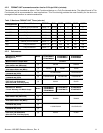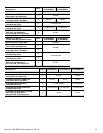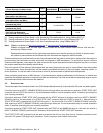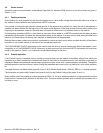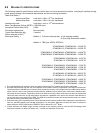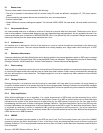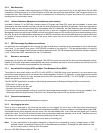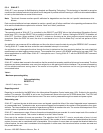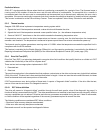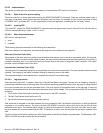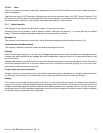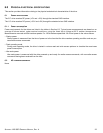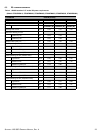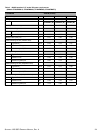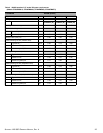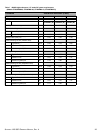SEAGATE 1200 SSD PRODUCT MANUAL, REV. A 19
Predictive failures
S.M.A.R.T. signals predictive failures when the drive is performing unacceptably for a period of time. The firmware keeps a
running count of the number of times the error rate for each attribute is unacceptable. To accomplish this, a counter is
incremented each time the error rate is unacceptable and decremented (not to exceed zero) whenever the error rate is
acceptable. If the counter continually increments such that it reaches the predictive threshold, a predictive failure is signaled.
This counter is referred to as the Failure History Counter. There is a separate Failure History Counter for each attribute.
5.3.5 Thermal monitor
Seagate 1200 SSD drives implement a temperature warning system which:
1. Signals the host if the temperature exceeds a value which would threaten the drive.
2. Signals the host if the temperature exceeds a user-specified value. (i.e., the reference temperature value)
3. Saves a S.M.A.R.T. data frame on the drive which exceeds the threatening temperature value.
A temperature sensor monitors the drive temperature and issues a warning over the interface when the temperature
exceeds a set threshold. The temperature is measured at power-up and then at ten-minute intervals after power-up.
The thermal monitor system generates a warning code of 01-0B01 when the temperature exceeds the specified limit in
compliance with the SCSI standard.
This feature is controlled by the Enable Warning (EWasc) bit, and the reporting mechanism is controlled by the Method of
Reporting Informational Exceptions field (MRIE) on the Informational Exceptions Control (IEC) mode page (1Ch).
5.3.6 Drive Self Test (DST)
Drive Self Test (DST) is a technology designed to recognize drive fault conditions that qualify the drive as a failed unit. DST
validates the functionality of the drive at a system level.
There are two test coverage options implemented in DST:
1. Extended test
2. Short test
The most thorough option is the extended test that performs various tests on the drive and scans every logical block address
(LBA) of the drive. The short test is time-restricted and limited in length—it does not scan the entire media contents, but does
some fundamental tests and scans portions of the media.
If DST encounters an error during either of these tests, it reports a "diagnostic failed" condition. If the drive fails the test,
remove it from service and return it to Seagate for service.
5.3.6.1 DST failure definition
The drive will present a “diagnostic failed” condition through the self-tests results value of the diagnostic log page if a
functional failure is encountered during DST. The drive parameters are not modified to test the drive more stringently, and the
recovery capabilities are not reduced. All retries and recovery processes are enabled during the test. If data is recoverable,
no failure condition will be reported regardless of the recovery processes required to recover the data.
The following conditions are considered DST failure conditions:
• Read error after recovery attempts are exhausted
• Write error after recovery attempts are exhausted
Recovered errors will not be reported as diagnostic failures.



